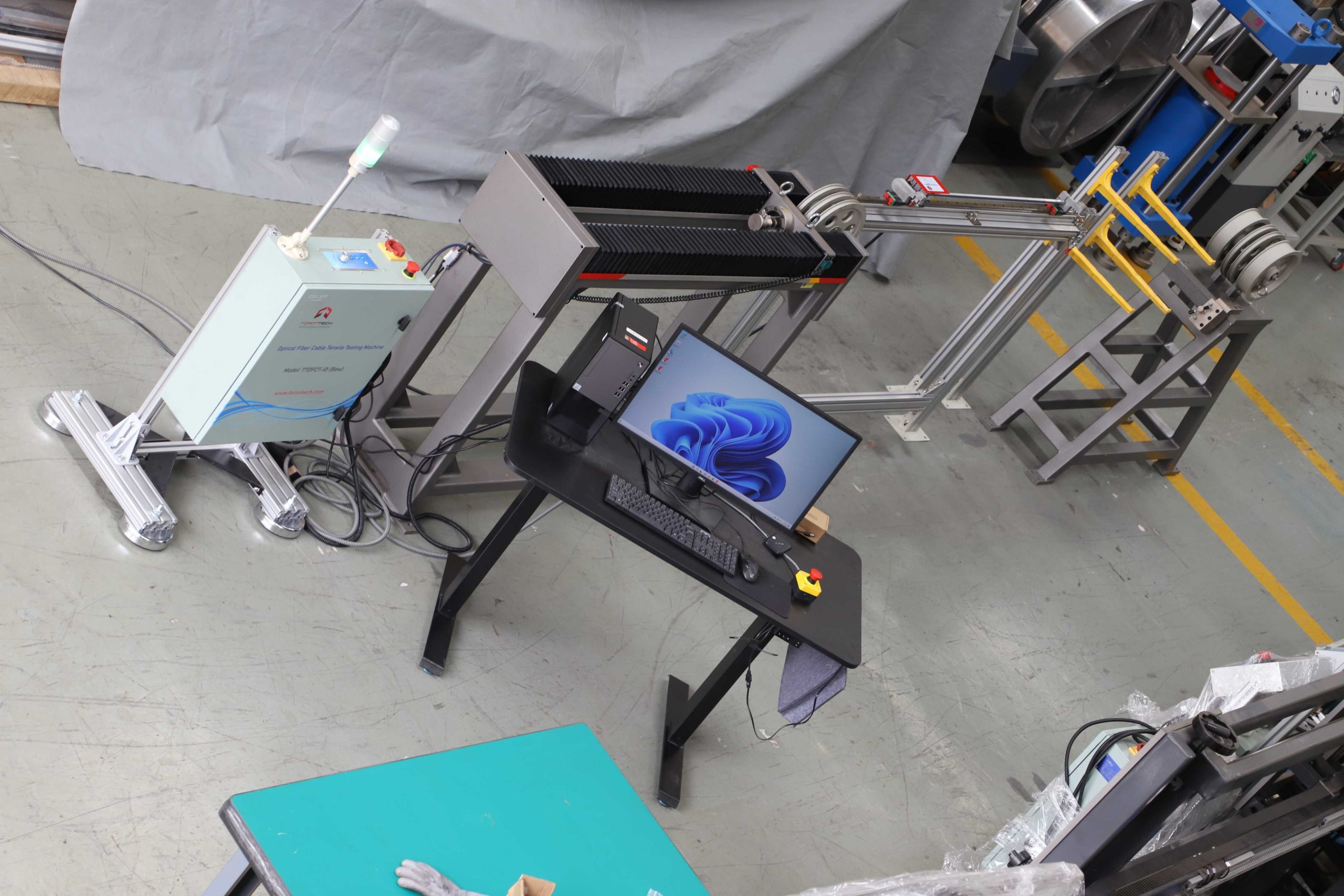Why Optical Fibre Screening Tools Is Essential for Network Upkeep
In the realm of network maintenance, the importance of optical fibre screening tools can not be overstated. By employing gadgets such as Optical Time Domain Name Reflectometers and Optical Power Meters, network experts can make certain compliance with sector standards while proactively attending to potential disturbances.
Relevance of Routine Examining
In the realm of telecoms, the importance of regular screening of optical fiber can not be overstated. Optical fibre networks act as the foundation of contemporary interaction systems, assisting in high-speed information transmission over vast distances. Routine screening makes certain the stability and reliability of these networks, detecting potential issues before they escalate right into substantial issues.
Checking helps identify mistakes, such as breaks or bends in the fibre, which can cause raised signal loss and jeopardized performance. Abnormalities in transmission can break down user experience, bring about reduce data prices and service disturbances. With methodical screening, network drivers can maintain optimum efficiency, making sure marginal downtime and making best use of service accessibility.
Furthermore, routine testing is necessary for compliance with industry standards and laws. It gives recorded evidence of network health, which is essential for audits and analyses. Additionally, regular screening aids in proactive maintenance methods, allowing operators to schedule repair services at practical times, therefore decreasing interruptions to users. To conclude, regular optical fiber screening is essential for keeping the functional efficiency, security, and long life of telecommunications infrastructure, inevitably ensuring a smooth communication experience for users.
Secret Kinds Of Screening Devices

An additional essential gadget is the Optical Power Meter, utilized to determine the power levels of optical signals in the fibre. When paired with a light source, it enables the analysis of web link loss, making sure that the network operates within specified criteria.
Additionally, a Fibre Identifier is very useful for recognizing certain fibres in a multi-fibre cord without interrupting service. This tool aids in maintenance tasks by identifying the appropriate fiber for screening or repair.
Last But Not Least, Visual Fault Locators (VFL) are utilized to find breaks and faults in fibre cables by sending out a noticeable light. With each other, these screening devices develop a crucial toolkit for keeping and troubleshooting optical fiber networks, ensuring reliable efficiency and minimizing downtime.
Troubleshooting Common Issues
When fixing usual issues in optical fibre networks, technicians commonly run into a series of issues that can affect efficiency and connectivity. One prevalent issue is signal loss, which might come from variables such as inappropriate splicing, flexes in the fiber, or unclean connectors. Making Use Of an Optical Time Domain Reflectometer (OTDR) enables specialists to identify the specific place of mistakes and examine the honesty of the fiber optic cable.
One more common problem is attenuation, which describes the decrease of signal strength over range. This can arise from too much bends or incorrect installment methods. Normal screening with power meters and lights can aid identify extreme attenuation and establish if the setup complies with industry criteria.

Enhancing Network Performance
Dealing with usual problems such as signal loss and attenuation establishes the foundation for improving network performance in optical fiber systems. By employing advanced optical fibre testing equipment, network administrators can recognize and rectify mistakes that jeopardize signal integrity. This aggressive technique not just avoids deterioration of solution yet also maximizes the general effectiveness of the network.
Normal testing enables the discovery of potential problems prior to they intensify, making sure marginal disruption to users (optical fibre diameter analyser). By measuring criteria such as insertion loss, return loss, and optical power degrees, technicians can gain important understandings right into the wellness of the fibre network. This data-driven technique allows targeted upkeep methods, facilitating quicker repairs and minimizing downtime
Moreover, maintaining optimum performance degrees is crucial for sustaining the raising needs of modern-day applications, such as high-def video clip streaming and cloud computing. Enhanced network performance equates to boosted individual experience, faster information transmission, and better integrity.
Cost-Effectiveness of Upkeep
Investing in optical fibre testing devices pays off considerably in regards to maintenance expenses. By making use of sophisticated screening tools, network operators can proactively discover faults and problems within the fibre optic facilities. This very early recognition reduces the threat of disastrous failures that could result in comprehensive downtime and pricey fixings.
Furthermore, the capacity to rapidly evaluate the problem of fibre wires permits extra efficient allotment of upkeep sources. Professionals can concentrate their initiatives on areas that call for prompt focus, rather than carrying out wide, taxing examinations that might not yield essential insights. This targeted method not just reduces work expenses yet also improves the overall performance of upkeep approaches.
In addition, normal screening with optical fiber equipment boosts the lifespan of the network framework. By addressing minor concerns prior to they intensify, operators can stay clear of the significant costs related to major repairs or replacements. The long-lasting financial benefits of investing in these testing tools far surpass the initial expenses, positioning organisations to keep optimum network efficiency while regulating expenditure. In summary, the cost-effectiveness of upkeep is substantially enhanced through the calculated use optical fibre screening devices, ultimately causing a robust and trustworthy network.
Final Thought
Finally, optical fiber screening devices plays an essential duty in maintaining network honesty and efficiency. Regular testing is vital for early fault detection and efficient troubleshooting, eventually improving network dependability. By utilizing vital tools such as Optical Time Domain Reflectometers and Optical Power Meters, operators can properly attend to common issues and improve overall performance. Proactive upkeep not just makes sure conformity with industry criteria yet likewise uses substantial cost financial savings, contributing to the long life of network framework.